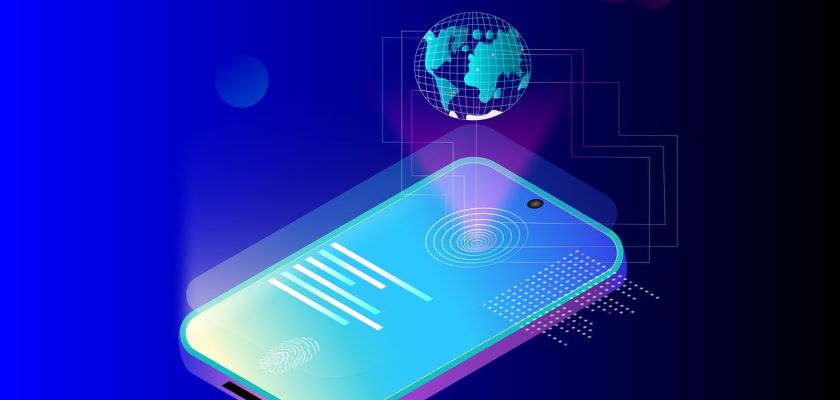Introduction:
Mobile apps have come a long way since their inception. The first mobile apps were simple, focused programs with specific functions. The journey began in the early 2000s when smartphones started gaining popularity. The first mobile apps were pre-installed on phones and had limited functionality, mostly centered around basic utilities like calculators, calendars, and contact lists.
The Early Days:
The concept of mobile applications dates back to the early 1990s when the first mobile phones with basic games and utilities emerged.
Then came the era of downloadable apps. The Apple App Store, launched in 2008, marked a significant milestone. Developers now had a platform to create and distribute third-party applications. The first versions of these apps were often basic, reflecting the novelty of the concept and the technical limitations of the time. They were experimental, trying to figure out what worked and what users found valuable.
These early apps were a far cry from the sophisticated, feature-rich applications we have today. They were more like prototypes, paving the way for the app revolution that followed. Over time, improvements in hardware, software, and connectivity gave developers the ability to create more sophisticated apps. The evolution was rapid, with each iteration bringing new features, better user interfaces, and enhanced performance.
From the humble beginnings of basic functionalities, mobile apps now span a vast and diverse landscape. They cover everything from communication and productivity to entertainment and health. The journey from the first version of mobile apps to the present has been a fascinating ride, showcasing the incredible innovation and creativity of developers worldwide.
Positive Impact on Generations:
The rise of mobile apps has brought about numerous positive changes across generations. For the younger demographic, mobile apps have become integral to communication, education, and entertainment. Educational apps engage children in interactive learning experiences, while social media apps connect teenagers in ways that were unimaginable a few decades ago.
For the working-age population, productivity apps have revolutionized the way we manage tasks, schedules, and communication. Professionals can now work remotely, thanks to collaborative tools and cloud-based applications that enable seamless connectivity.
Negative Impact on Generations:
However, the ubiquitous nature of mobile apps has not been without its challenges. The younger generation faces issues like digital addiction, cyberbullying, and a constant need for validation through social media platforms. The instant gratification provided by mobile apps can also contribute to a decrease in attention spans.
For adults, the blurring of lines between work and personal life due to constant connectivity can lead to burnout and stress. Privacy concerns have also emerged, with data breaches and unauthorized access to personal information becoming more prevalent.
Future Trends:
The future of mobile apps is likely to be shaped by emerging technologies like augmented reality (AR), virtual reality (VR), and artificial intelligence (AI). These technologies will redefine how we interact with apps, blurring the lines between the digital and physical worlds.
Integrating AI into mobile apps will enable more personalized experiences, predictive analytics, and advanced automation. AR and VR applications will create immersive environments for gaming, education, and even virtual social interactions.
Generational Shifts:
Each generation has adapted differently to the influx of mobile apps. Baby boomers, for instance, initially struggled to keep up with the rapid technological advancements but have since embraced mobile apps for communication and utility.
Millennials were the first generation to fully experience the impact of mobile apps during their formative years. They are accustomed to the convenience and instant access to information that apps provide.
Generation Z, the true digital natives, has grown up in a world where smartphones and apps are omnipresent. Their social interactions, education, and entertainment are deeply intertwined with mobile technology.
Positive Effects Age-Wise:
- Children and Teens: Educational apps can enhance learning experiences. Social media apps can foster connection and creativity.
- Working-Age Adults: Productivity apps streamline work processes and facilitate remote work. Networking apps aid professional connections.
Negative Effects Age-Wise:
- Children and Teens: Potential for cyberbullying, digital addiction, and exposure to inappropriate content.
- Working-Age Adults: Working-age adults are increasingly subject to stress caused by the need to remain constantly connected, which can lead to potential issues in balancing work and personal life. It is important to acknowledge the negative impact of this constant connectivity and take necessary steps to ensure a healthy work-life balance. In this way, employers can help their employees achieve greater job satisfaction and productivity, ultimately benefiting both the employee and the organization as a whole.
Conclusion:
The history of mobile apps is a testament to human innovation and adaptability. While mobile apps have positively transformed various aspects of our lives, they also pose challenges that need to be addressed. The future promises even more advancements, but it’s crucial to navigate these changes mindfully to ensure balance between positive and negative consequences across generations.


